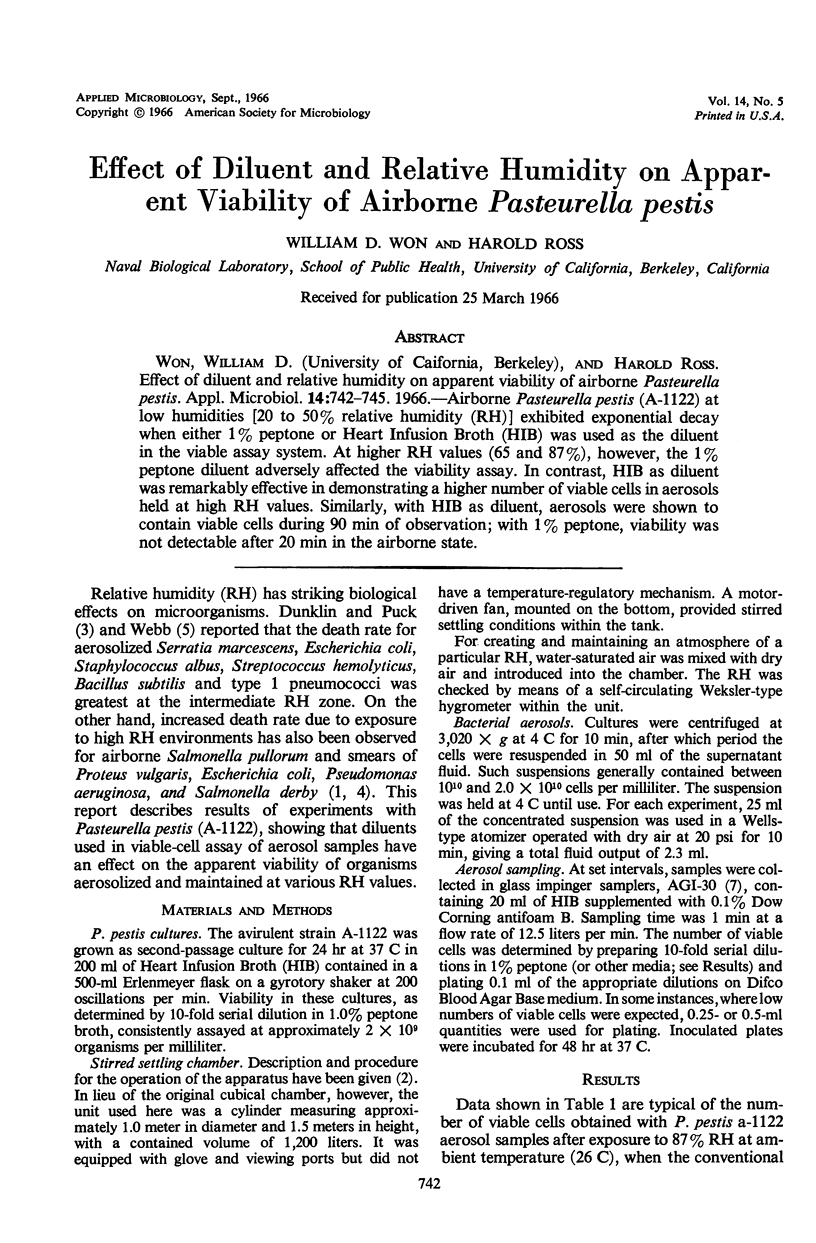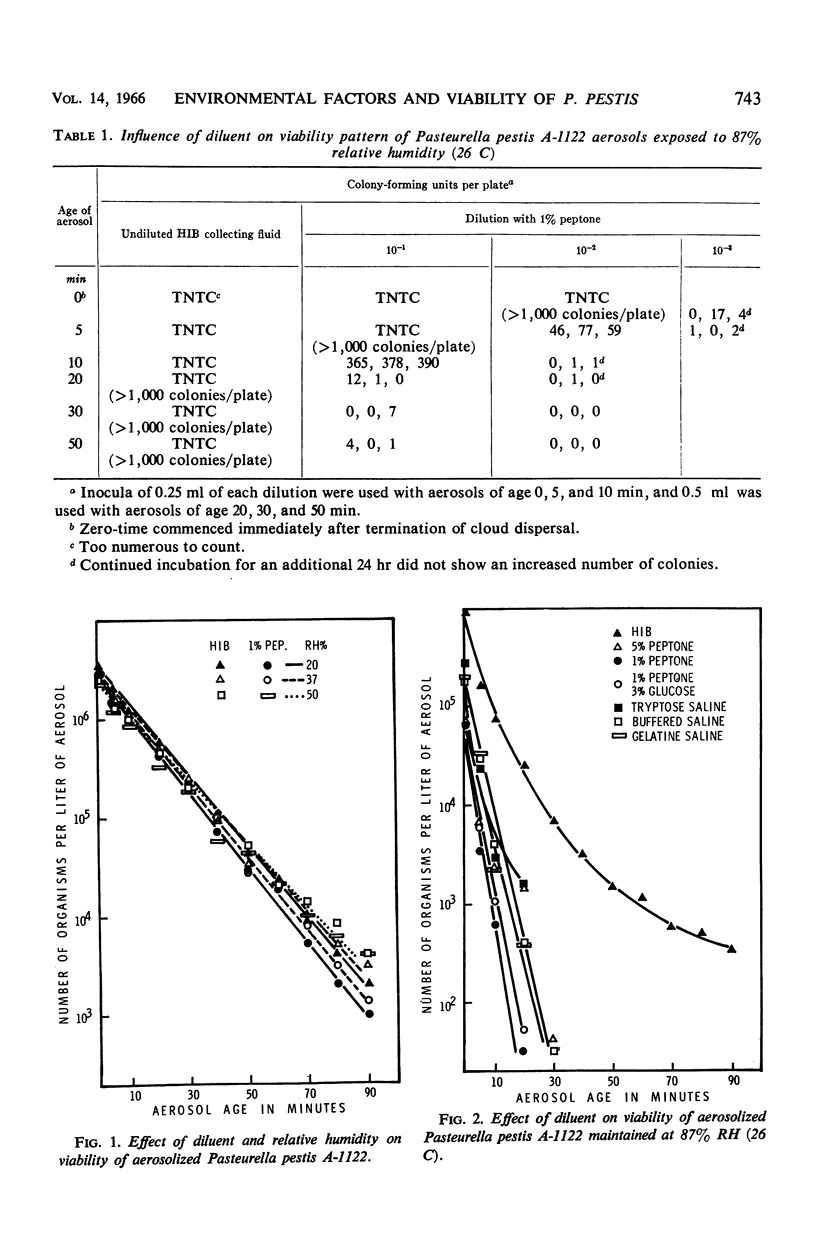Abstract
Airborne Pasteurella pestis (A-1122) at low humidities [20 to 50% relative humidity (RH)] exhibited exponential decay when either 1% peptone or Heart Infusion Broth (HIB) was used as the diluent in the viable assay system. At higher RH values (65 and 87%), however, the 1% peptone diluent adversely affected the viability assay. In contrast, HIB as diluent was remarkably effective in demonstrating a higher number of viable cells in aerosols held at high RH values. Similarly, with HIB as diluent, aerosols were shown to contain viable cells during 90 min of observation; with 1% peptone, viability was not detectable after 20 min in the airborne state.
Full text
PDF



Selected References
These references are in PubMed. This may not be the complete list of references from this article.
- MCDADE J. J., HALL L. B. SURVIVAL OF GRAM-NEGATIVE BACTERIA IN THE ENVIRONMENT. I. EFFECT OF RELATIVE HUMIDITY ON SURFACE-EXPOSED ORGANISMS. Am J Hyg. 1964 Sep;80:192–204. doi: 10.1093/oxfordjournals.aje.a120468. [DOI] [PubMed] [Google Scholar]
- WEBB S. J. Factors affecting the viability of air-borne bacteria. II. The effect of chemical additives on the behavior of air-borne cells. Can J Microbiol. 1960 Feb;6:71–87. doi: 10.1139/m60-010. [DOI] [PubMed] [Google Scholar]


